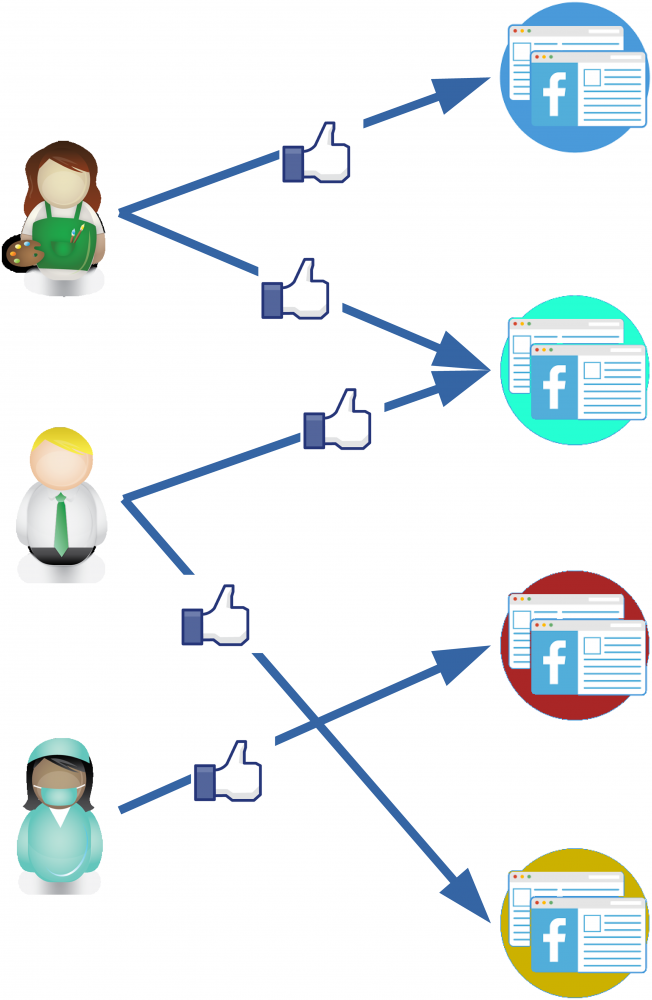Ranking pages’ impact and users’ engagement on Facebook
Introduction to PopRank, an algorithm to assess both the Impact of Facebook pages as well as users’ Engagement on the basis of their mutual interactions
The ideas behind PopRank are that:
- high impact pages attract many users with a low engagement, which means that they receive comments from users that rarely comment,
- high engagement users interact with high impact pages, that is they mostly comment pages with a high popularity.
In their paper, published in PloS One, the authors (Andrea Zaccaria, Michela Del Vicario, Walter Quattrociocchi, Antonio Scala, Luciano Pietronero) have introduced this novel algorithm to rank both Facebook pages’ impact and users’ engagement on the basis of their mutual interaction.
To do so they have built a bipartite network whose links indicate that a given user is commenting the posts of a given page more than a suitable average.
Why a bipartite network? Because when modelling relations between two different classes of objects, bipartite graphs very often arise naturally.
Thus the database consists in the history of interactions (likes, comments) of Facebook users with Facebook pages. In this form, it corresponds to a bipartite graph whose edges have a time tag (i.e. when the interaction happened) and therefore can be multiple (each user can comment at different times the same page).

Structure of the database used as an input to the algorithms studied in the paper.
In particular, the authors started from the general idea that pages with a strong Impact are commented by many users with a low Engagement, and users have a high Engagement if they comment many pages with a high Impact.
The main final results are the following ones:
- the Impact can be used to successfully predict the activity of and on users on a given page with a six months time delay. The PopRank algorithm can also predict how many comments will be posted on that page and the number of users will comment its posts.
- more engaged users act on higher impact pages.
- pages’ impact turns out to be slightly dependent on the quality of pages’ informative content (e.g., science vs conspiracy) but independent of users’ polarization.
These results have been obtained by analyzing Facebook pages without any discrimination based on their informational content. This means that, for instance, scientific dissemination and fake news were processed in the same way and show the very same behavior: in particular, the relationship between their Impact and the future activity of their users is practically the same. This finding confirms the substantial symmetry between pages (and users) of different opinion, regardless of the possible veracity, if any, of the conveyed information.
